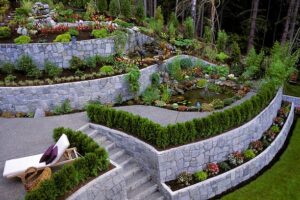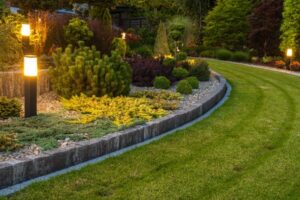Landscape Architects Adelaide can provide innovative landscaping ideas if you want to renovate your front or backyard or design a new garden. These professionals combine artistic composition with horticultural expertise and technical knowledge to maximise the potential of your outdoor spaces. For more information about landscape design Adelaide, click here.
 A visit to the Adelaide Himeji Garden is a journey into the heart of the city’s cultural exchange with Japan. It embodies the principles Kumada set out to achieve in his garden designs.
A visit to the Adelaide Himeji Garden is a journey into the heart of the city’s cultural exchange with Japan. It embodies the principles Kumada set out to achieve in his garden designs.
Free form style
A professional landscape gardener with ecological and aesthetic training can help you maximise the potential of your property. They will analyse your home’s architecture and yard, then design walkways, patios, water features, fences, and garden aspects to complement your style and functionality.
For example, a pond or waterfall can add drama to your garden and create a focal point. Contrasting clumps of plants also help add interest to a planting design. Similarly, winding pathways can add interest and excitement to a garden.
The backyard and front gardens are often a focus of landscaping Adelaide homes. Usually, homeowners wish to include areas for children to play, outdoor living spaces and hardscape construction plans for pool landscaping, decking and retaining walls. They also ask for landscaping in Adelaide’s western suburbs with native landscaping that is tough and drought tolerant. They also want to make the most of their sloping blocks. Landscapers will consider all of these requests in their design process and can provide quotes for landscaping your garden. For more information about landscape design Adelaide, click here.
Water feature
A water feature can add a peaceful atmosphere to your landscape. From fountains to babbling brooks, water features bring a soothing feeling to any garden. They are also popular because they drown out noise from nearby traffic or neighbours and provide a natural cooling effect in summer. Water features also attract wildlife, such as birds and butterflies, adding to the aesthetic appeal of your garden.
A landscape architect creates a master plan for an outdoor space and identifies what plants will grow where. They will also design structures like swimming pools and paved areas for entertaining. They are familiar with the regional climate and what plants do well there.
Sphere Landscape Design Adelaide is experienced in creating gardens that balance hard and soft landscaping, bringing a real sense of character to your home and garden. Call Kylie at Sphere today. They can transform your backyard or front yard and help you fall in love with your outdoor spaces again.
Pathways
Landscape designers are concerned with the relationship between nature and human culture. They work with open spaces to create thriving, healthy communities and landscapes that are resilient and adaptable in response to climate change and other global challenges. They use design to expand possibilities, not memorise fixed definitions.
Pathways and walkways are critical elements in many Adelaide garden designs. They serve two purposes: they lead the eye through the garden, and they provide a place to stroll and relax. Linear features such as paths and rills are easy to include in landscape designs because they tend to draw the eye forward. For more information about landscape design Adelaide, click here.
Use contrasting clumps of plants to soften pathway edges, including ground covers like bugleweed and lamb’s ears or shrubs such as Corsican mint or thyme. Repeating your chosen pathway materials throughout the garden is also a good idea. This will help tie everything together and give the garden a coherent feel. Try combining pavers and gravel or using a checkerboard pattern of stepping stones set in bark.
Natural stone
Landscape designer Tony Stanton can offer a more natural garden style, considering the soil’s pH, wind and rain conditions, each plant’s growth rate, and proximity to other structures and planting.
This is because he has the artistic training and deep knowledge of being a Microbiologist and Horticulturist. Garden design software may give a perception of this, but it cannot compare to Tony’s real-life experience in creating gardens to thrive within their environment.
He has also helped many Adelaide Hills and Rural residents who want resort or tropical garden styles. With the addition of outdoor spas and pools, this is a relaxing and beautiful way to spend time in your backyard.
 Early spring marks the return of Old Man Winter and is the ideal time for
Early spring marks the return of Old Man Winter and is the ideal time for